ARQ. GUSTAVO AVILES: Transvision. Visual dialectics of the interior-exterior space
Gustavo Avilés has been focused on Light in Architecture since 1984, representing a transdisciplanary professional and academic development of architectural lighting on anInternational context. His work achieves a wide variety of applications: residential, corporate, historical buildings, lighting master plans, landscape, artistic installations and expositions, and large-scale projections. Gustavo holds the FONCA (Fondo Nacional para la Cultura y las Artes) National Scholarship for Creators and has founded the Architectural Lighting Design Specialization at the UNAM.
As an introductory reflection I like to mention that my work is guided by a model of thought oriented in a visual dialectic that, rather than dividing the natural landscape of the artificial, the interior and exterior space, it uses light as the element that transcends all disciplines, unifying and pacifying apparently contrary and distant concepts.
– Gustavo Aviles.
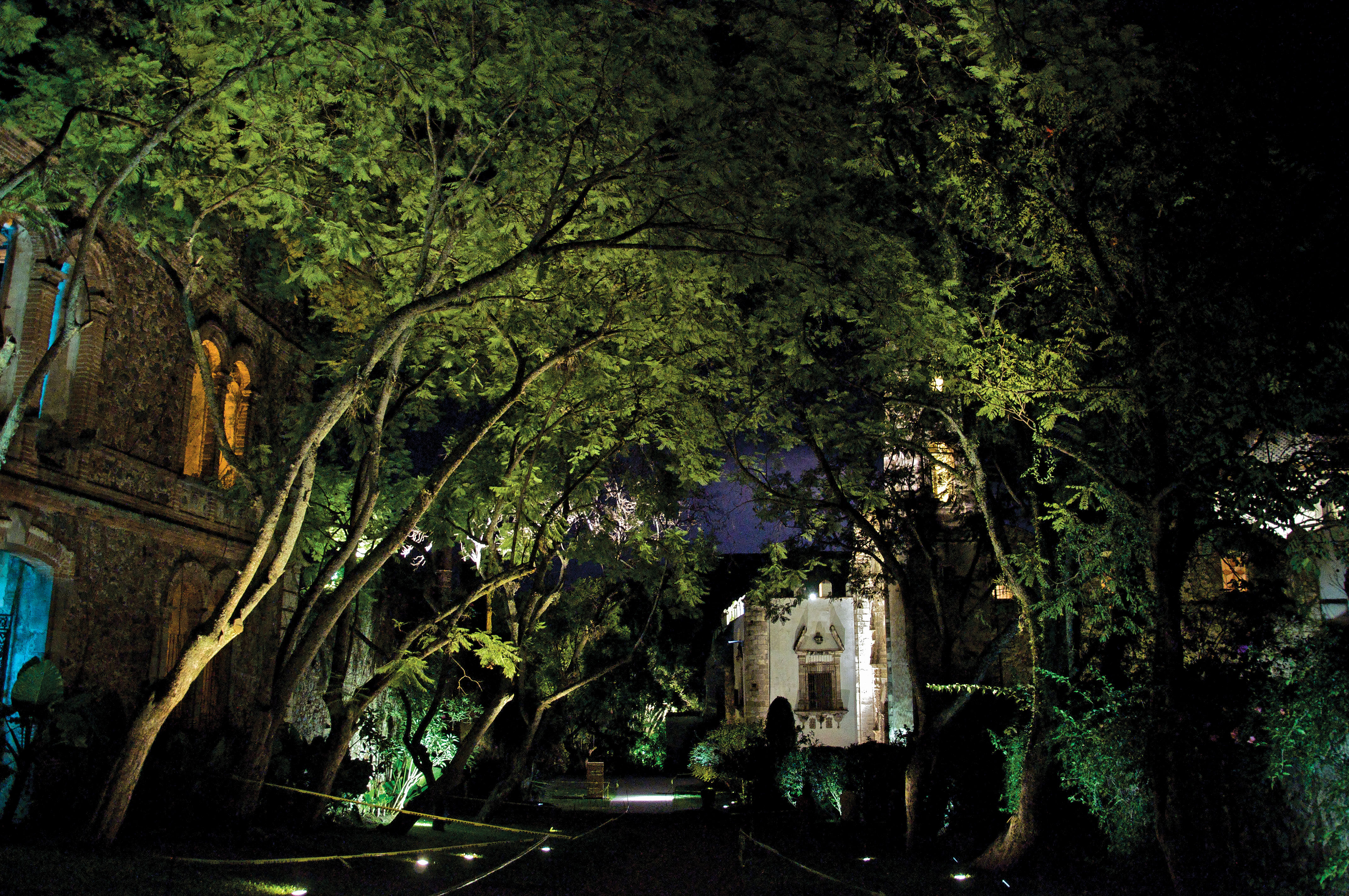
Relación luz y oscuridad. / Light and dark relationship. “Hacienda Jalmolonga” Iluminación / Lighting: Lighteam Gustavo Avilés S.C. Fotografía / Photography: Sandra Pérez Nieto
What role does lighting play in the landscape?
Lighting applied to landscape can create nocturnal spaces that are different from those contemplated during the day, revealing new interpretations and providing new visual information about our surroundings. Light becomes an element that links the natural and constructed world, as a kind of skin that extends and covers the entire territory: from natural and agricultural landscapes to towns, peripheries and cities. That’s why I like to think of the landscape as a continuum, a series of lines that emerge along the earth’s surface, and as light manifests itself as a visual phenomenon, it inspires an experience of the landscape as an aesthetic experience. Thus, enclaves of reflection, contemplation and recreation arise in contrast to the spaces of conflict in the cities. Through light, the landscape acquires a scenographic power that is capable of communicating, allows for narratives and gives a perceptive stimulus that produces an emotional / affective response and activates the memory of the inhabitants. These values are of course also supported by a sense of security, perception of wellbeing and adequate signage and orientation that grant accessibility to the space and extend the hours of use of these spaces.
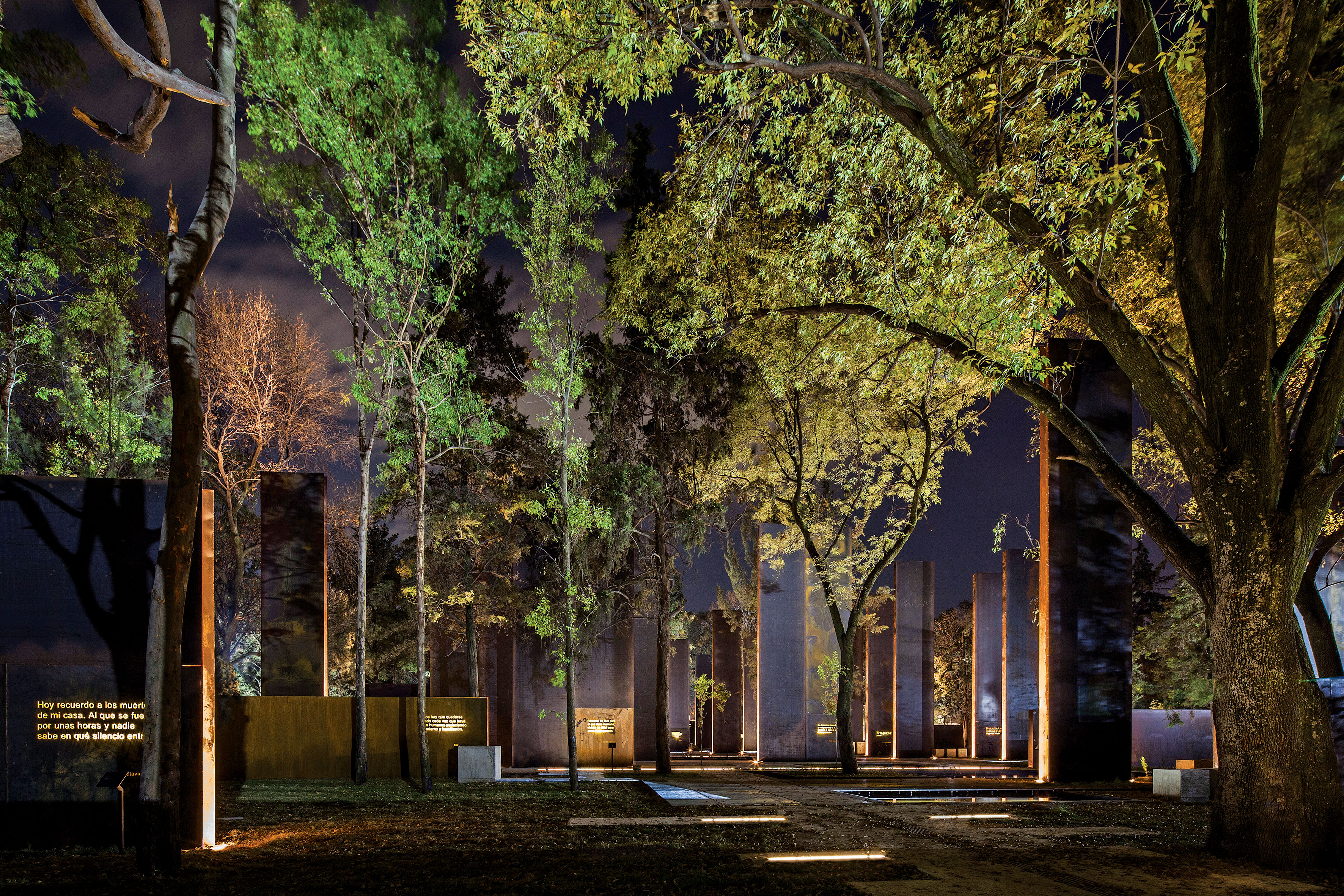
Scale and elevation, “Memorial to Victims of Violence” in Mexico / Project: Gaeta-Springall Arquitectos / Lighting: Lighteam Gustavo Avilés S.C. / Photography: Sandra Pérez Nieto
Which was the main objective of the lighting design at the Memorial to Victims of Violence?
The recovery of public space, as well as the memory of the victims of violence, summarizes the essence of the project. The project has a double condition of public space and memorial and recognizes the strong presence of nature. The Memorial to Victims of Violence is composed of a series of steel plates, some weathered and some reflective, placed on a mirror of water.
Light helps to articulate these architectural and landscape elements as an allegory of what is now materially absent but always present in our individual and collective memory.
This absence-presence is referenced by the landscape elements constructed and the voids that make up the space. The positive values of light in contrast to the shadow during the day, and the negative representation that emerges during the night, also echo the relationship between presence and absence. The contours of the metal plates are delineated with light to create subtle silhouettes. This ambiguity between the solid of the plates, the vacuum between solids, and the reflections in the water, is used as a mechanism to materialize the “absence”. The loss of lives, victims of this conflict, is remembered by illuminating to emphasize this absence.
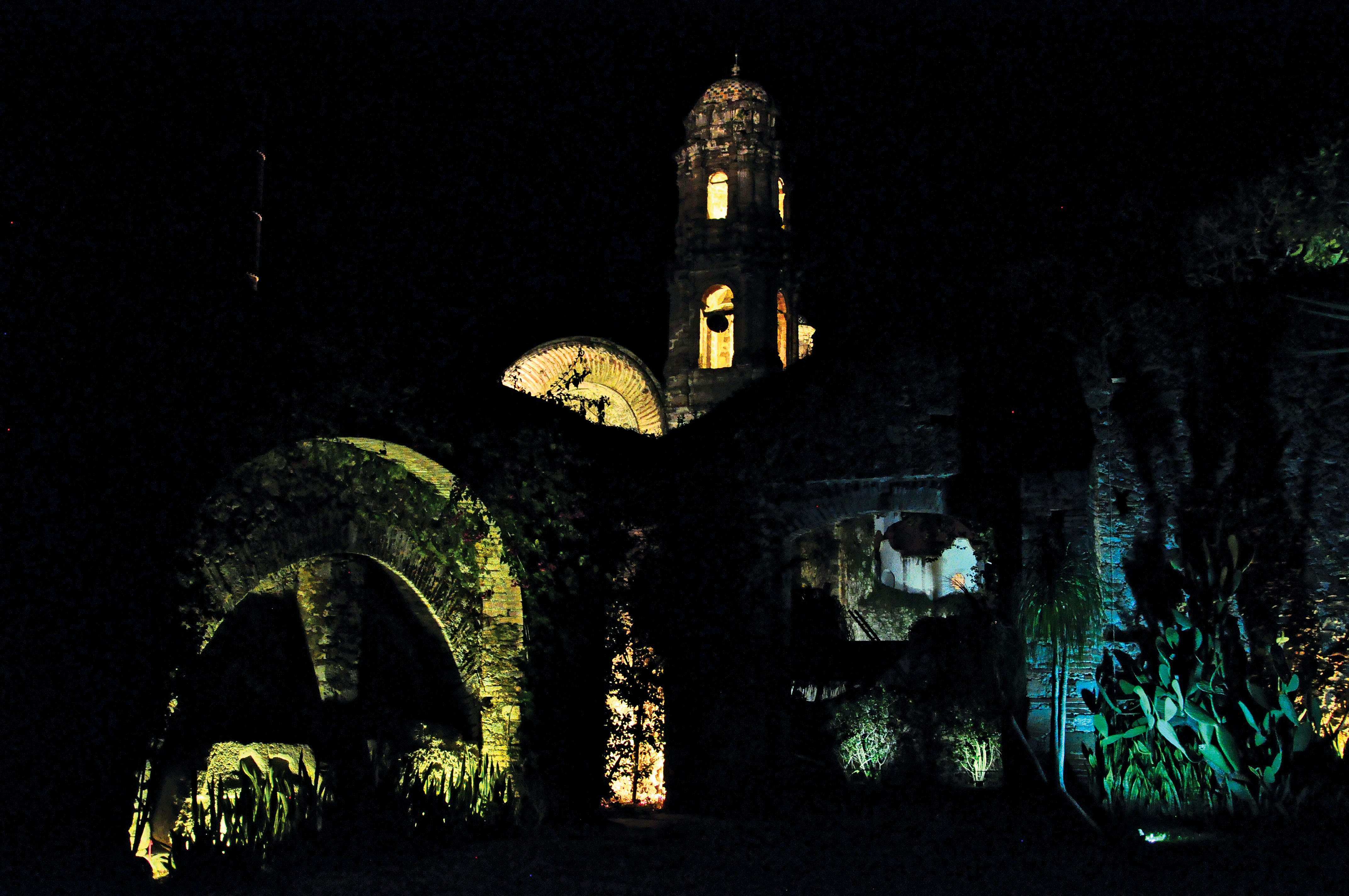
Contrast. “Hacienda Jalmolonga” / Lighting: Lighteam Gustavo Avilés S.C. / Photography: Lighteam Gustavo Avilés S.C.
Light is also used to suggest a promenade, guiding visitors, serving as a measure of security and spatial orientation, but more symbolically as a guide to deep reflection. Working with the architectural concept, the walk is also marked with light in crescendo, from less light to a cathartic point of luminosity, and finally in diminuendo.
In this project, the light works in alchemy, merging with the landscape, the sound, the texture, the aroma, the poetic, graphic and architectural language, conjuring an atmosphere of peace and reflection.
The light takes abstract values of silence to bring a comforting effect to the site. In this light, the materials strike up a dialogue with the visitor: the rust on the worn plates speaks about the passage of time and the scars we have from our past; the illuminated elements reflected in the water force us to contemplate and reflect on our present; The interaction between light and reflective plates creates an ethereal effect, which represents a future of silver linings.
Lighting the surrounding trees and recognizing their enveloping and comforting ubiquity suggests a divine presence. It was used to illuminate the tops of the trees and guide the visitors’ eyes up to the sky.
This light also covers the luminous space that emerges from the surrounding darkness like a lantern of hope.
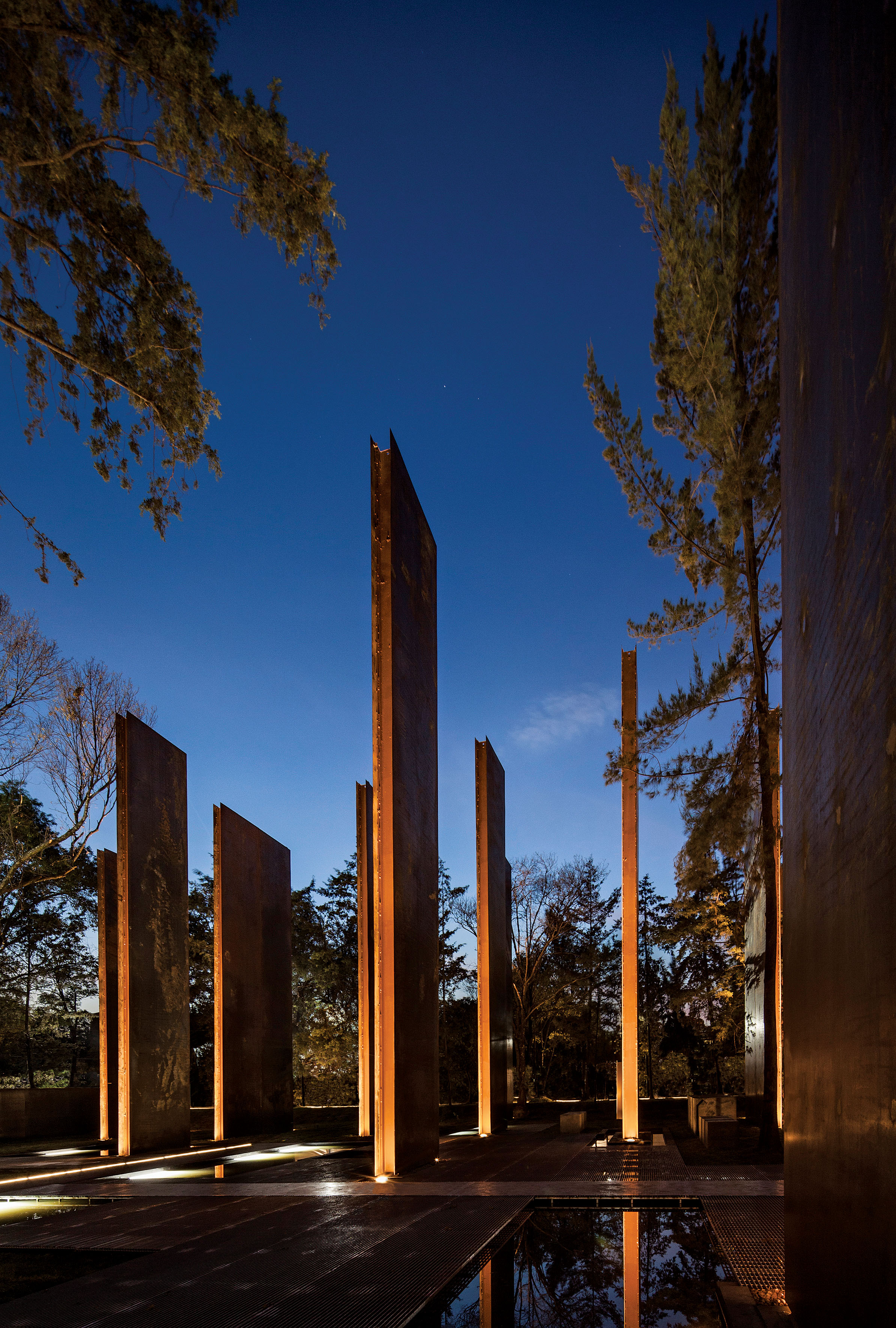
Reflection and thought, Memorial to Victims of Violence” in Mexico / Project: Gaeta-Springall Arquitectos / Lighting: Lighteam Gustavo Avilés S.C. / Photography: Sandra Pérez Nieto
How does lighting merge with the landscape?
Creating a poetic vision of a nocturnal landscape that, unlike basic functional installations, enables other possibilities beyond the simple power of seeing. It is necessary to apply new strategies, to intervene the landscape in another dimension. The work of the illuminator in the landscape is to decide what he will use to transforms the landscape. It is necessary to investigate the history of the place, to sense its topography, analyze the vegetation, the passage of water and the presence of built elements. Each place has its essence and this must be interpreted and translated into the language “light”. When it comes to illuminating the landscape, I constantly refer to the impressionist pictorial tradition and the traits that defined it: the changing luminous phenomenon caught in an ephemeral moment on the landscape and captured by light traces and shadow on the canvas. The light becomes the great unifying factor, as well as a means of invocation-evocation to create an atmosphere of contemplation and remembrance.
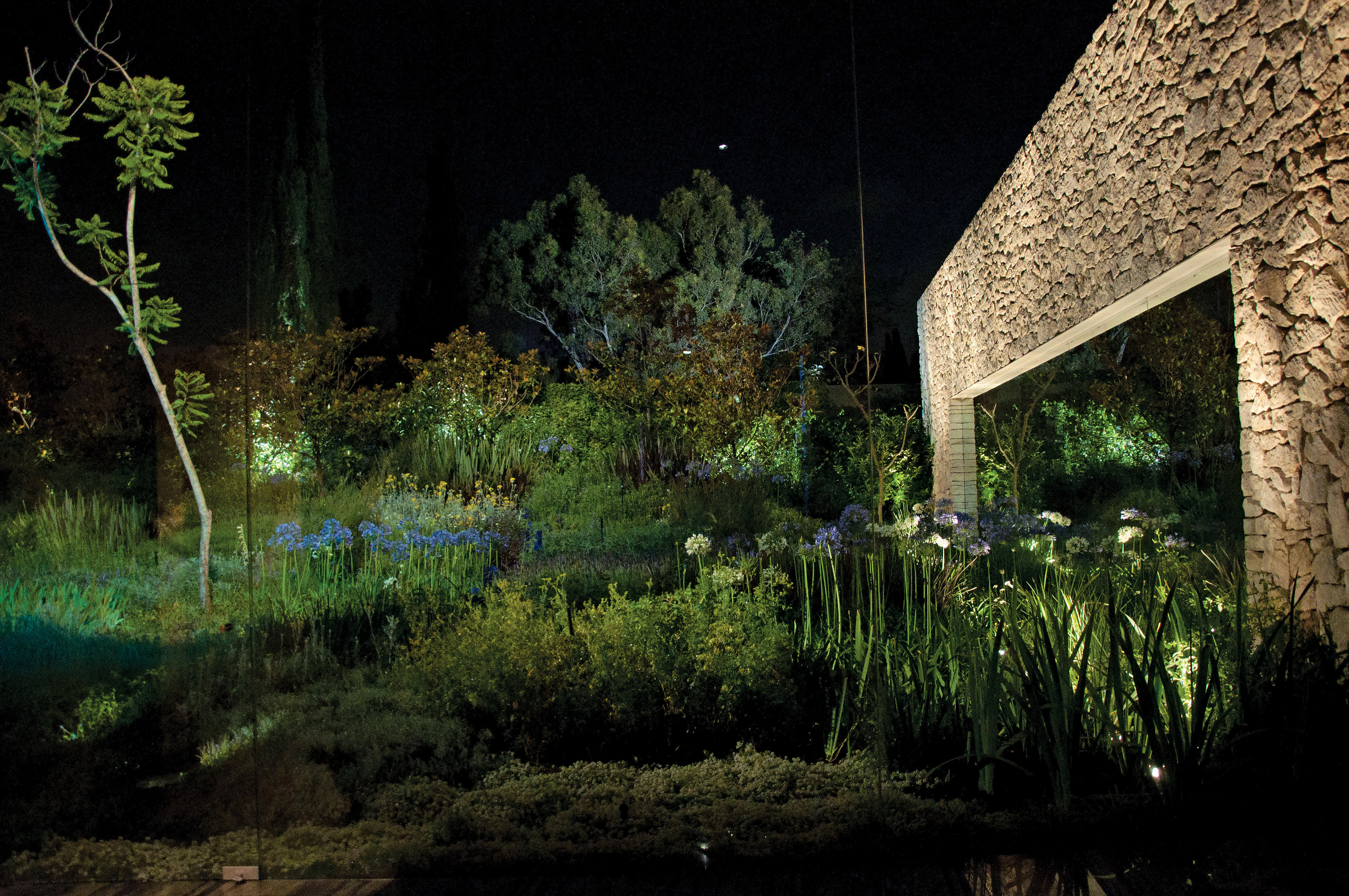
Texture, surface and counterpoint. Residential Project / Lighting: Lighteam Gustavo Avilés S.C. / Photography: Lighteam Gustavo Avilés S.C.
How can you explain the concept of building with light applied to a landscape design?
I have always mentioned that light is a structural element, capable of both building and destroying a space. In its nature as immaterial matter, light has its own language of compositional values: contrast, texture, color, brightness, scale, direction, speed, time, rhythm, etc. It is also necessary to recognize that light as an optical phenomenon is only perceived when it comes into contact with matter. That is why it is essential to recognize the nature and energetic and formal presence of the landscape elements in order to transport them to luminous meanings.
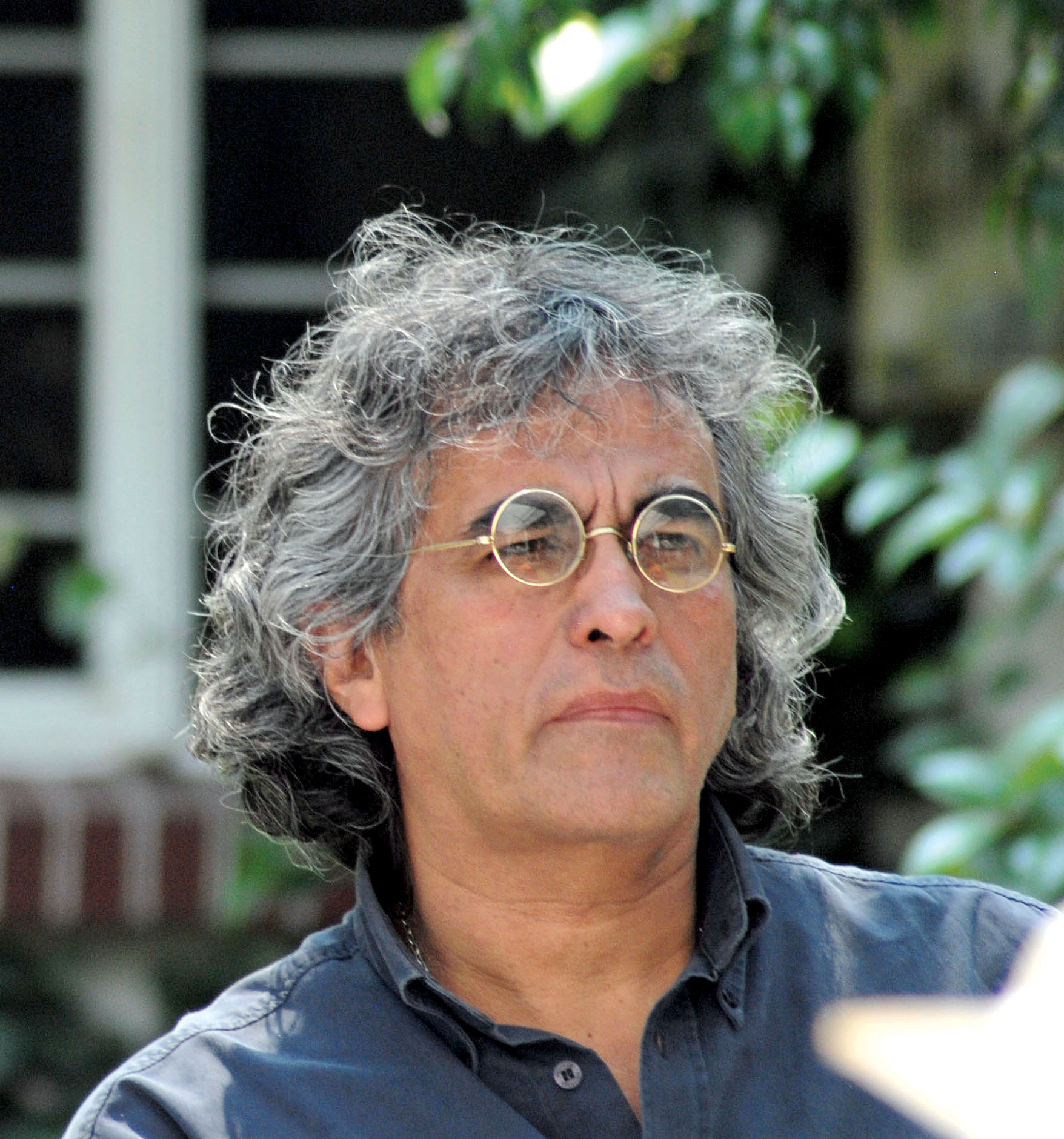
Photography: Lighteam Gustavo Avilés S.C.








